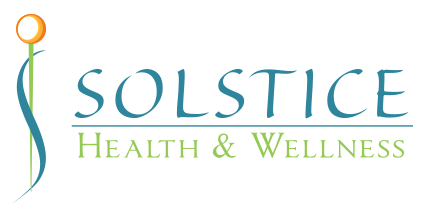Mental Health
What is Mental Illness?
What is Mental Health
Mental health includes our emotional, psychological, and social well-being. It affects how we think, feel, and act. It also helps determine how we handle stress, relate to others, and make healthy choices. Mental health is important at every stage of life, from childhood and adolescence through adulthood.
Although the terms are often used interchangeably, poor mental health and mental illness are not the same things. A person can experience poor mental health and not be diagnosed with a mental illness. Likewise, a person diagnosed with a mental illness can experience periods of physical, mental, and social well-being.
Why is mental health important for overall health?
Mental and physical health are equally important components of overall health. Mental illness, especially depression, increases the risk for many types of physical health problems, particularly long-lasting conditions like stroke, type 2 diabetes, and heart disease. Similarly, the presence of chronic conditions can increase the risk for mental illness.
Can your mental health change over time?
Yes, it’s important to remember that a person’s mental health can change over time, depending on many factors. When the demands placed on a person exceed their resources and coping abilities, their mental health could be impacted. For example, if someone is working long hours caring for an ill relative or experiencing economic hardship they may experience poor mental health.
How common are mental illnesses?
Mental illnesses are among the most common health conditions in the United States.
- More than 50% will be diagnosed with a mental illness or disorder at some point in their lifetime.
- 1 in 5 Americans will experience a mental illness in a given year.
- 1 in 5 children, either currently or at some point during their life, have had a seriously debilitating mental illness.
- 1 in 25 Americans lives with a serious mental illness, such as schizophrenia, bipolar disorder, or major depression.
What causes mental illness?
There is no single cause for mental illness. A number of factors can contribute to risk for mental illness, such as
- Early adverse life experiences, such as trauma or a history of abuse (for example, child abuse, sexual assault, witnessing violence, etc.)
- Experiences related to other ongoing (chronic) medical condition, such as cancer or diabetes.
- Biological factors, such as genes or chemical imbalances in the brain
- Use of alcohol or recreational drugs
- Having few friends
- Having feelings of loneliness or isolation
Types of Mental Illness
People can experience different types of mental illnesses or disorders, and they can often occur at the same time. Mental illnesses can occur over a short period of time or be episodic. This means that the mental illness comes and goes with discrete beginnings and ends. Mental illness can also be ongoing or long-lasting.
There are more than 200 classified external types of mental illness. Some of the main types of mental illness and disorders are listed below; however, this list is not exhaustive.
Anxiety Disorders
People with anxiety disorders respond to certain objects or situations with fear and dread or terror. Anxiety disorders include generalized anxiety disorder, social anxiety, panic disorders, and phobias.
Attention-Deficit/Hyperactivity Disorder
Attention-deficit/hyperactivity disorder (ADHD) is one of the most common childhood mental disorders. It can continue through adolescence and adulthood. People diagnosed with ADHD may have trouble paying attention, controlling impulsive behaviors (may act without thinking about what the result will be), or be overly active.
Disruptive Behavioral Disorders
Behavioral disorders involve a pattern of disruptive behaviors in children that last for at least 6 months and cause problems in school, at home, and in social situations. Behavioral symptoms can also continue into adulthood.
Depression and Other Mood Disorders
While bad moods are common, and usually pass in a short period, people suffering from mood disorders live with more constant and severe symptoms. People living with this mental illness find that their mood impacts both mental and psychological well-being, nearly every day, and often for much of the day.
It is estimated that 1 in 10 adults suffer from some type of mood disorder, with the most common conditions being depression and bipolar disorder. With proper diagnosis and treatment, most of those living with mood disorders lead healthy, normal and productive lives. If left untreated, this illness can affect role functioning, quality of life and many long-lasting physical health problems such as diabetes and heart disease.
Eating Disorders
Eating disorders involve obsessive and sometimes distressing thoughts and behaviors, including
- Reduction of food intake
- Overeating
- Feelings of depression or distress
- Concern about weight, body shape, poor self-image
- Common types of eating disorders include anorexia, bulimia, and binge eating.
Personality Disorders
People with personality disorders have extreme and inflexible personality traits that cause problems in work, school, or social relationships. Personality disorders include antisocial personality disorder and borderline personality disorder.
Posttraumatic Stress Disorder (PTSD)
A person can get PTSD after living through or seeing a traumatic event, such as war, a hurricane, physical abuse, or a serious accident. PTSD can make someone feel stressed and afraid after the danger is over. People with PTSD may experience symptoms like reliving the event over and over, sleep problems, become very upset if something causes memories of the event, constantly looking for possible threats, and changes in emotions like irritability, outbursts, helplessness, or feelings of numbness.
Schizophrenia Spectrum and Other Psychotic Disorders
People with psychotic disorders hear, see, and believe things that aren’t real or true. They may also show signs of disorganized thinking, confused speech, and muddled or abnormal motor behavior. An example of a psychotic disorder is schizophrenia. People with schizophrenia may also have low motivation and blunted emotions.
Substance Use Disorders
Substance use disorders occur when frequent or repeated use of alcohol and/or drugs causes significant impairment, such as health problems, disability, and failure to meet major responsibilities at work, school, or home. Substance use problems can be fatal to the user or others. Examples include drunk driving fatalities and drug overdoses.
Mental illnesses and substance use disorders often occur together. Sometimes one disorder can be a contributing factor to or can make the other worse. Sometimes they simply occur at the same time.
CDC syndicated content
Fast Facts
Mental Illness and Adults
In 2015, there were an estimated 43.4 million adults –about 1 in 5 Americans aged 18 or older – with a mental illness within the previous year.
In 2015, there were an estimated 9.8 million adults – about 1 in 25 Americans aged 18 or older – with serious mental illness. “Serious mental illness” is defined as individuals experiencing within the past year a mental illness or disorder with serious functional impairment that substantially interferes with or limits one or more major life activities.
Mental Illness and Children and Teens
- Just over 20% – or 1 in 5 – children, have had a seriously debilitating mental disorder.
- Half of all chronic mental illness begins by age 14 and three-quarters begin by age 24.
Treatment
- Number of visits to physician offices with mental disorders as the primary diagnosis: 65.9 million.
- In 2015, 75% of children aged 4 to 17 received treatment for their mental disorders within the past year.
Impact of Mental Illness
- Suicide, which is often associated with symptoms of mental illness, is the 10th leading cause of death the U.S. and the 2nd leading cause of death among people aged 15-34.
- Serious mental illness costs in the United States amount to $193.2 billion in lost earnings per year.
- Mood disorders, including major depression, dysthymic disorder, and bipolar disorder, are the third most common cause of hospitalization in the United States. for both youth and adults aged 18 to 44.
- Individuals living with serious mental illness face an increased risk of physical health problems, such as heart disease, diabetes, and HIV (human immunodeficiency virus, the virus that causes AIDS).
- U.S. adults living with serious mental illness die on average 25 years earlier than others, largely due to treatable medical conditions.
Mental Health Promotion and Prevention
Preventing mental illness and promoting good mental health involves actions to create living conditions and environments that support mental health and allow people to adopt and maintain healthy lifestyles. These include a range of actions to increase the chances of more people experiencing better mental health, such as:
- Early childhood interventions (for example, home visits for pregnant women and programs that help young children build social and emotional skills).
- Social support for older people.
- Programs targeted to people affected by disasters or other traumatic events.
- Mental health interventions at work (for example, stress prevention programs).
- Violence prevention strategies (for example, reducing violence in the community and the home).
- Campaigns to change the culture of mental health so that all of those in need receive the care and support they deserve.
*Please do not submit any Protected Health Information (PHI).


